One Life-Changing Exercise Trick for People Over 60, Say Experts
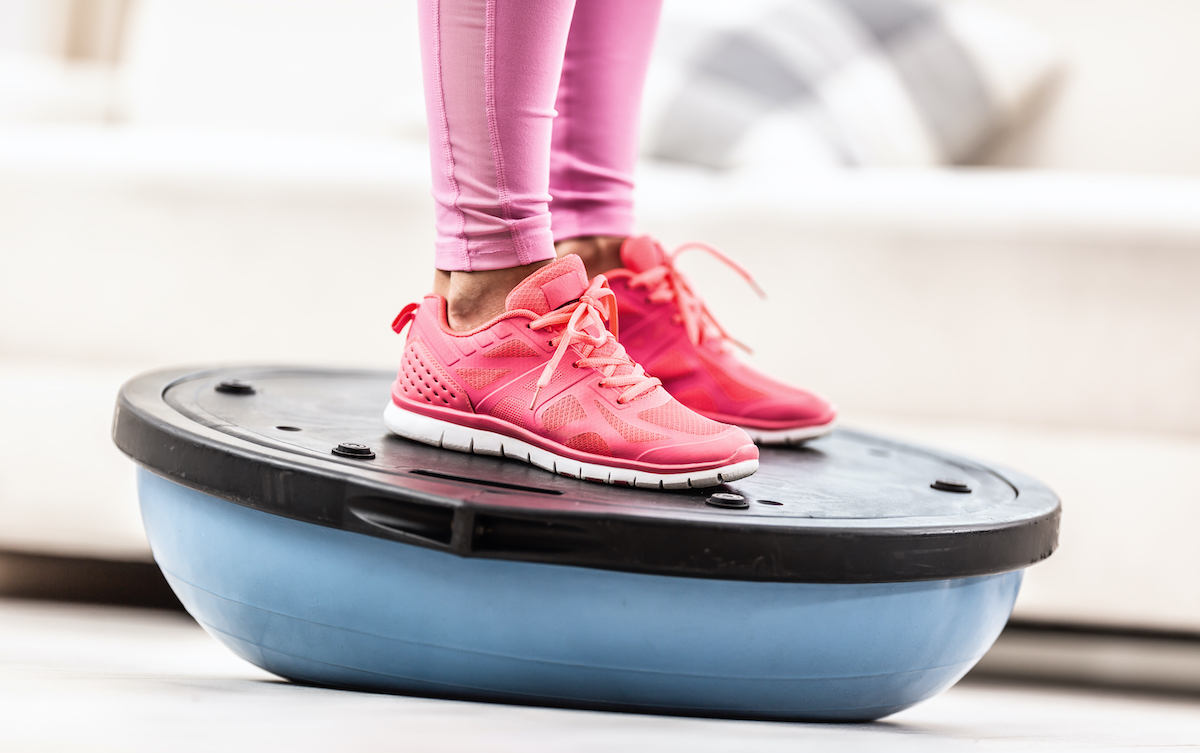
As we’ve recently reported, having good balance is essential for living a longer, healthier life. After all, when your ability to stay balanced on your feet starts to deteriorate, it’s a major red flag for both physical and mental decline.
“People who have poor balance don’t live as long,” Dawn Skelton, Ph.D., a professor at Glasgow Caledonia University in the UK, explained recently on the popular BBC health podcast “Just One Thing.”
Physically, less balance means not only a greater risk of falling and inevitable weight gain—and all of the health risks that accompany less exercise—but it also means your brain is suffering, as well. “It has more to do with the brain, and the brain being able to do the right thing,” said Skelton. “If it’s not doing it well for balance, it’s probably not doing it that well for your hormones and your cardiovascular system. It’s a marker of decline.”
This is why health and fitness professionals emphasize the importance of doing more balance-based training to ensure that your sense of balance remains sharp. According to a new report published in The Washington Post, however, there’s one very specific form of balance-based training that stands out in helping “prevent falls among older adults and those with neurological conditions,” while also helping “recreational athletes avoid injury and speed up rehabilitation.”
Curious to know more? Read on, and for more great exercises to try as you get older, check out some of the all-time best exercises that people over 60 can possibly do, according to one top personal trainer.
Meet Perturbation-Based Balance Training (PBT)
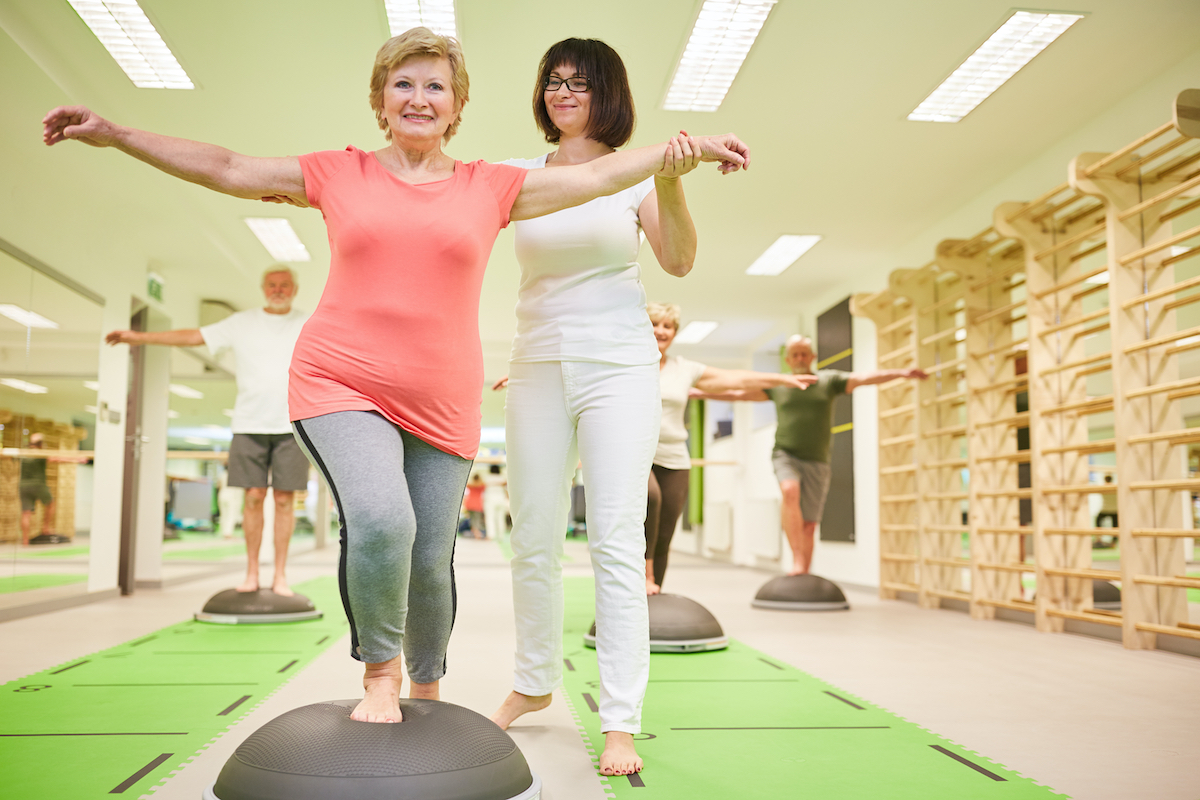
According to a study published in the BMC Geriatrics in January of this year, perturbation-based balance training (PBT) is loosely defined as a “a form of training that aims to improve reactive balance control after unexpected external perturbations.” In other words, it’s when you try to retain your balance while outside forces—whether it’s someone actually pushing you or you’re wobbling on an unsteady surface—try to make it harder. In some cases, you’ll actually be forced to fall and have to catch yourself.
“In a safe and controlled environment, participants are repeatedly exposed to destabilizing perturbations during various activities of daily living,” the study explains. “Many different training setups can be utilized, from fairly simple lean-and-release perturbations requiring only a safety harness, to advanced systems that can provide a wide variety of perturbation types and intensities during various tasks.”
The goal is to train your body to get better at catching itself from falls by forcing yourself to actually react to falling. And for some exercises to avoid, don’t miss this list of The Worst Exercises You Can Do After 60.
How to Do PBT
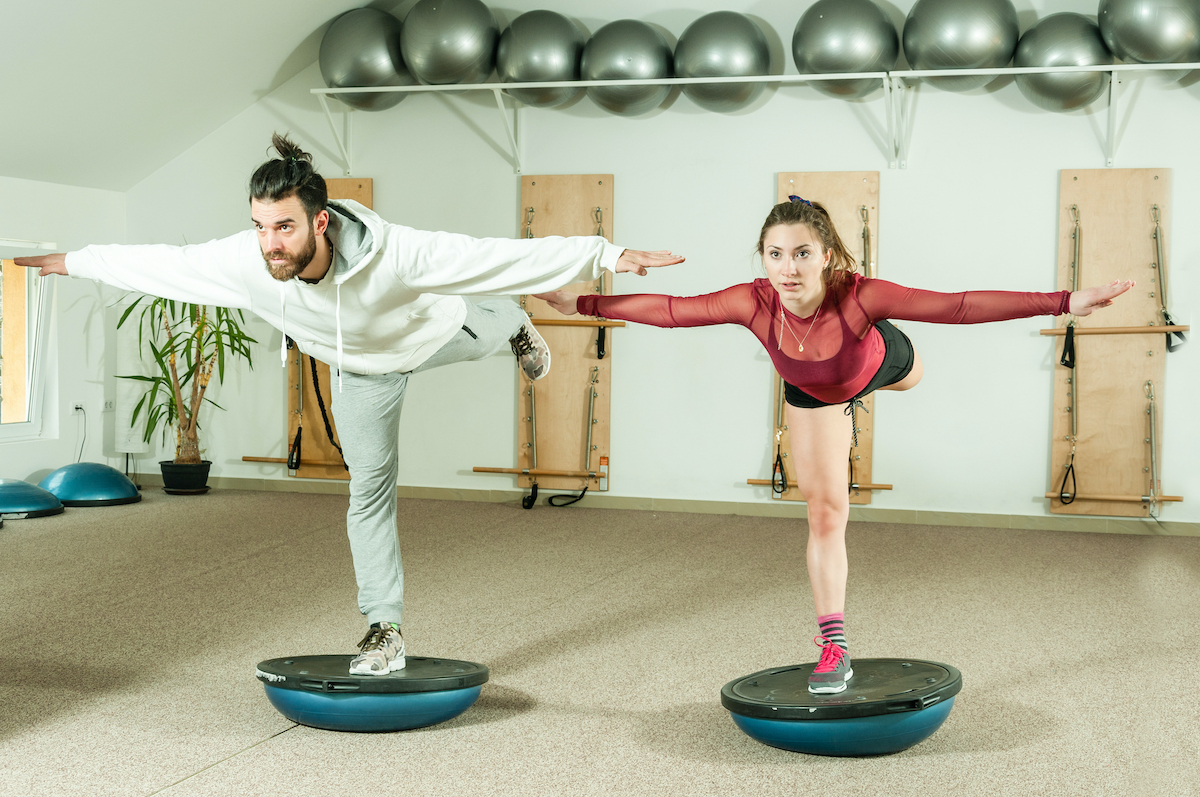
Serious PBT is usually done in the laboratory, where researchers induce falling scenarios on test subjects who are attached to safety harnesses. But there are ways to do PBT at home. “Challenges differ based on fitness levels,” notes WaPo. “For recreational athletes, PBT could involve standing on one leg for 30 seconds with their eyes closed. Elite athletes, however, might do the same and have no problem maintaining their balance; in this case, they might need to move to an unstable surface, such as a Bosu ball, and stand on one leg and catch or kick a ball to test their reactive balance.”
As Kevin Wilk, P.T., D.P.T., F.A.P.T.A., a professor of physical therapy at Marquette University, explained to the newspaper, one example of PBT put into use at home is performing “mini-squats” while keeping your hands on a table. If the participants could do that exercise well, “then we ask them to take [their] hands away or keep one finger on the table and close [their] eyes and do that squat.”
Another example is the “airplane,” where you stand on one leg and lean forward with your arms outstretched like wings, and rotate your core. (Shown in the above image.) And for more great exercise advice, don’t miss The Secret Mental Trick for Getting a Lean Body, Say Experts.
Here’s Why It Works
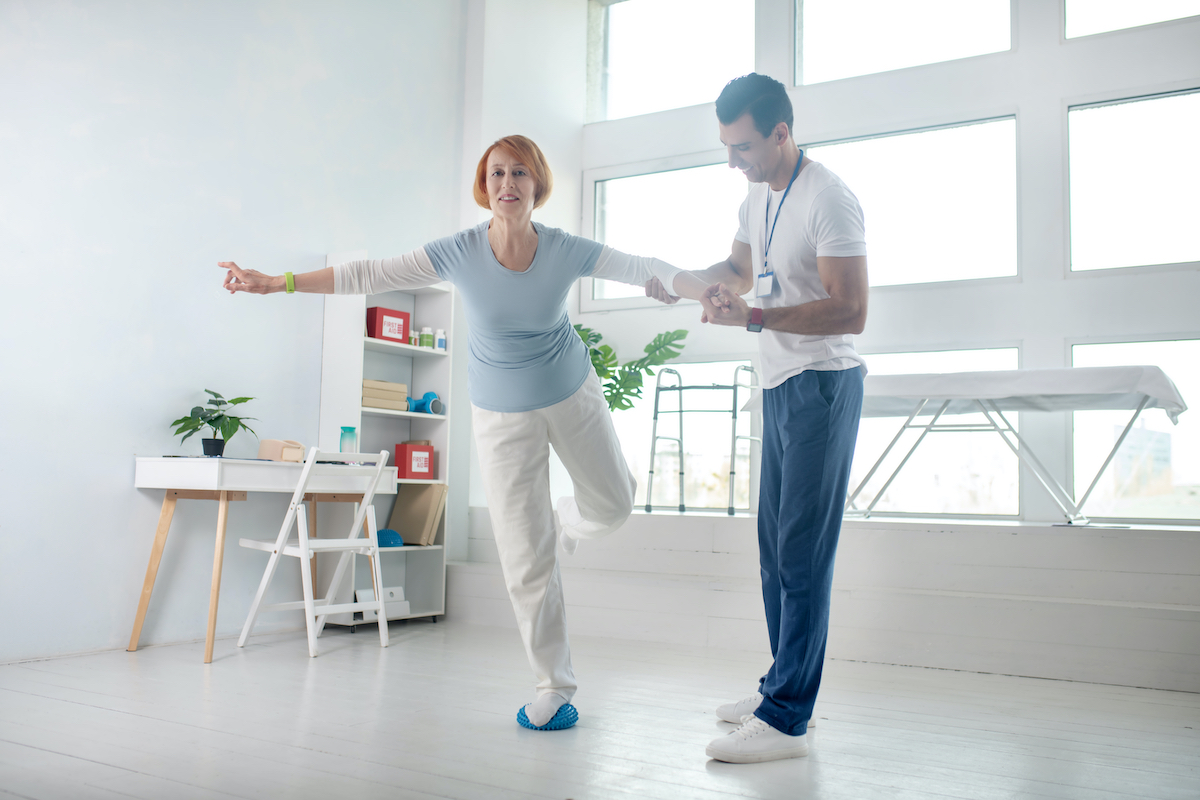
According to a 2014 study of 212 people over the age 65, which was published in The Journals of Gerontology, a single session of PBT was associated with increasing their balance and lowering their risk of falling by 50% after both a six-month and 12-month follow-up.
The volunteers were all recruited from nursing homes, exercise centers such as the YMCA, and other “senior centers.” Using a mechanical platform with a harness and “shock-absorbing suspension ropes,” the researchers forced the participants to slip, fall, and catch themselves while walking. “The results indeed further confirmed that such training benefits can be retained and be generalized to reduce these older adults’ likelihood of annual fall risk by 50% in their daily living,” the study notes.
Experts say that PBT will help not only help with aging, but also with rehabilitating injuries (particularly ACL tears) and improving sports performance.
For More Balance Based Exercises
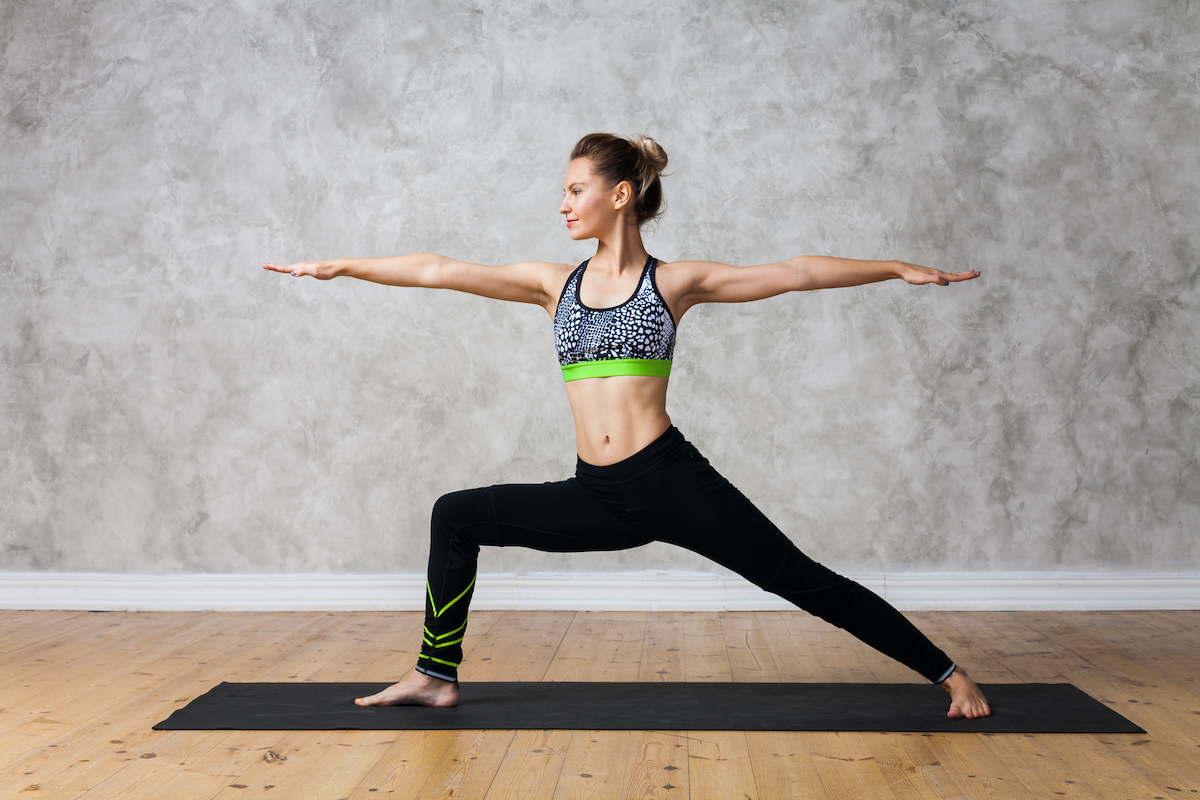
If you’re looking to improve your balance, you can start simply by standing on one leg at time for 30-second intervals, as noted above, or doing “the airplane.” Also, according to Skelton, you should make it a point to stand up “once an hour” and perform tandem stands (which is when you stand with one foot behind the other, like a tight-rope walker), and walk backwards. “Just make sure you know where you’re going,” she told “Just One Thing.” And if you’re in the market for more great exercises that will challenge your coordination—including the famous yoga warriro pose (shown above)—don’t miss Your New Go-To Exercises for Balance and Stability as You Age.








